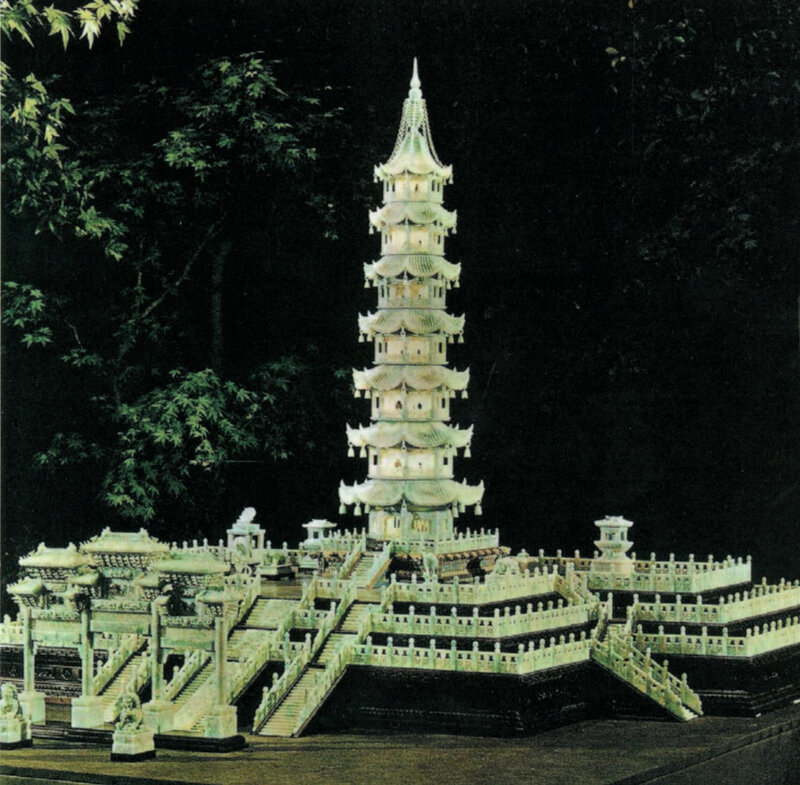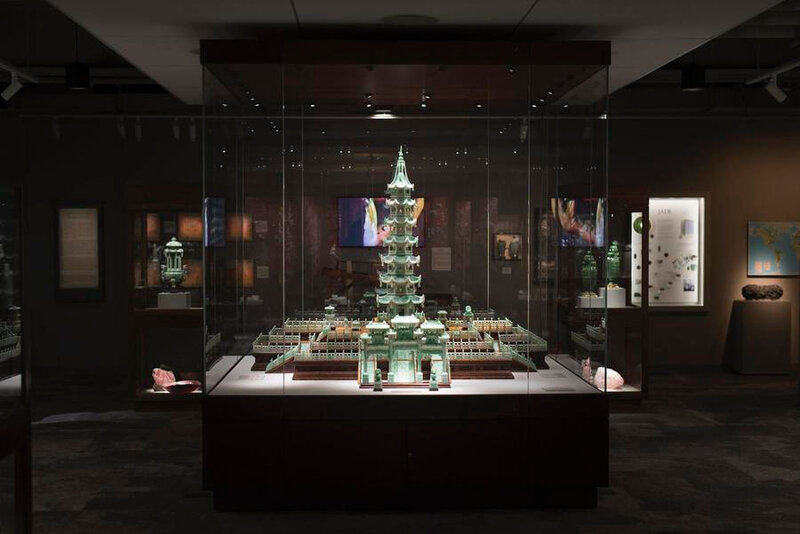A Magnificent Five-Foot-Tall Jade Pagoda Is Among the Must-See Treasures at Expanded Lizzardo Museum
Altar of the Green Jade Pagoda, Lizzadro Museum of Lapidary Art, Oak Brook, Illinois
Re-carving the Past: The Art of Chinese Bronzes and Jades, a special exhibit extended through January 3rd, 2021, will be on view at the new location of the Lizzardo Museum of Lapidary Art, in Oak Brook, Illinois, following a temporary closure during the pandemic. Visitors will also not want to miss a recently-acquired treasure in the museum collection—an intricately-carved 5-foot tall jade pagoda—once described as the Eighth Wonder of the World.
As the past is a primary source of historical and cultural consciousness in China, fascination with the material remnants of antiquity brought enormous inspiration to art creation. Jade carved to emulate the archaic forms and designs of ritual bronzes has been highly treasured by the elite class since the eleventh century. This practice reached its apogee during Emperor Qianlong’s reign in the eighteenth century.
The Re-carving the Past exhibition features 11 bronzes from the MacLean Collection and 15 jade carvings from the Lizzadro Collection. By juxtaposing the early ritual bronzes and late imperial jade carvings, it highlights the major aesthetic features and symbolic associations of these two highly appreciated art forms.
Dr. Tongyun Yin, Lizzardo's Curator of Asian Arts, created the exhibit for the opening of the newly expanded museum outside of Chicago last November. Click here for a video curator's tour of the exhibition.
A major new highlight of the museum is the 5-foot-tall jade pagoda once displayed at the 1933 Chicago World’s Fair. The pagoda came from the Oakland County Museum of California, and it was donated to the museum along with several other pieces from the Cheng collection.
“This is the largest jade carving outside mainland China,” says curator Tongyun Yin, adding that the piece was acquired in 2018. “But sadly, not many people today know about it.” Read more about the pagoda from Atlas Obscura.
Over 70 years ago, Joseph Lizzadro began collecting Chinese jade carvings and the museum is carried on by his family. Lizzardo focused his collecting on the beauty of the material and the quality of craftsmanship. Many of the important pieces in the collection are dated to China’s most prolific era of carving, the Qianlong (Ch’ien Lung) period 1736 to 1795. Under the influence of Emperor Qianlong, many anonymous artisans of the era reached the highest level of carving artistry. The majority of the museum’s collection represents works from the Qing Dynasty 1644 to 1912.

/https%3A%2F%2Fprofilepics.canalblog.com%2Fprofilepics%2F1%2F0%2F100183.jpg)
/https%3A%2F%2Fstorage.canalblog.com%2F03%2F02%2F119589%2F96711876_o.jpg)
/https%3A%2F%2Fstorage.canalblog.com%2F11%2F31%2F119589%2F94773502_o.jpg)
/https%3A%2F%2Fstorage.canalblog.com%2F20%2F83%2F119589%2F94772815_o.jpg)
/https%3A%2F%2Fstorage.canalblog.com%2F26%2F72%2F119589%2F75604929_o.jpg)
/https%3A%2F%2Fstorage.canalblog.com%2F59%2F60%2F119589%2F26458628_o.jpg)





/image%2F1371349%2F20240504%2Fob_93e6fc_440746014-1663431631093516-33520012940.jpg)
/image%2F1371349%2F20240504%2Fob_ad891b_441216662-1663349251101754-34964046851.jpg)
/image%2F1371349%2F20240504%2Fob_aed9af_441052920-1663343744435638-38708661590.jpg)
/image%2F1371349%2F20240504%2Fob_d96259_441052920-1663343744435638-38708661590.jpg)